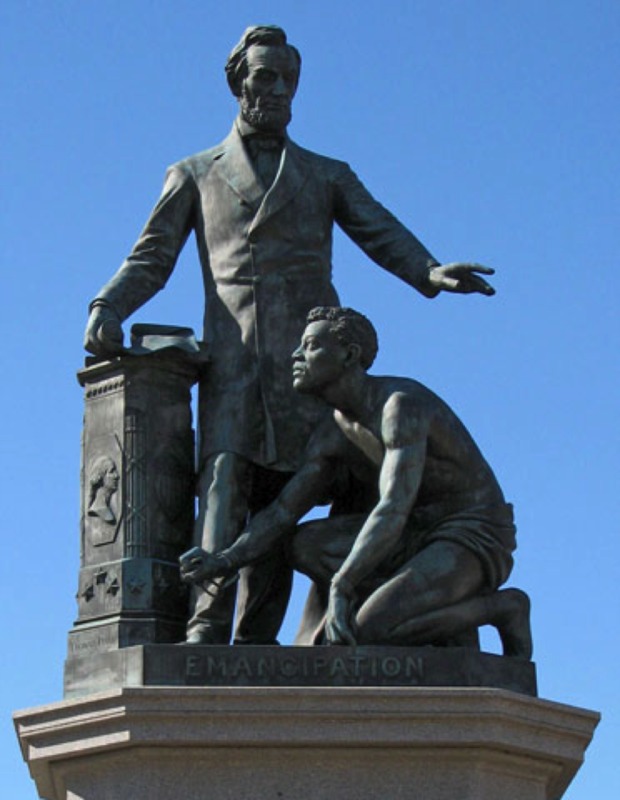Emancipation or Freedman's Memorial
 Thomas Ball designed and sculpted the Emancipation Memorial, also known as the Freedman’s Memorial, with a commission from the St. Louis Western Sanitary Commission. According to contemporary newspaper accounts, the fundraising drive began when a freed slave contributed five dollars from her first earnings to memorialize Lincoln when she heard of his assassination. The monument plaque heralds the fact that it was financed exclusively by freed slaves, but the management of the funds, selection of the design, and all oversight was handled by whites and was controversial from its inception. The memorial, with its kneeling slave at the feet of the Great Emancipator, was the focus of criticism. An African-American organization led by Henry Highland Garnet proposed an alternate memorial that would serve a practical purpose—the establishment of a school where freedmen could achieve an education—but funding for this purpose stalled when leading abolitionists argued for a more traditional and permanent monument. The memorial was dedicated in 1876 was Reconstruction coming to an end.
Thomas Ball designed and sculpted the Emancipation Memorial, also known as the Freedman’s Memorial, with a commission from the St. Louis Western Sanitary Commission. According to contemporary newspaper accounts, the fundraising drive began when a freed slave contributed five dollars from her first earnings to memorialize Lincoln when she heard of his assassination. The monument plaque heralds the fact that it was financed exclusively by freed slaves, but the management of the funds, selection of the design, and all oversight was handled by whites and was controversial from its inception. The memorial, with its kneeling slave at the feet of the Great Emancipator, was the focus of criticism. An African-American organization led by Henry Highland Garnet proposed an alternate memorial that would serve a practical purpose—the establishment of a school where freedmen could achieve an education—but funding for this purpose stalled when leading abolitionists argued for a more traditional and permanent monument. The memorial was dedicated in 1876 was Reconstruction coming to an end.URL: http://iarchives.nysed.gov/dmsBlue/viewImageData.jsp?id=1199
Creator: Thomas Ball
Source: Lincoln Park, Washington, D.C.
Date: 1876



